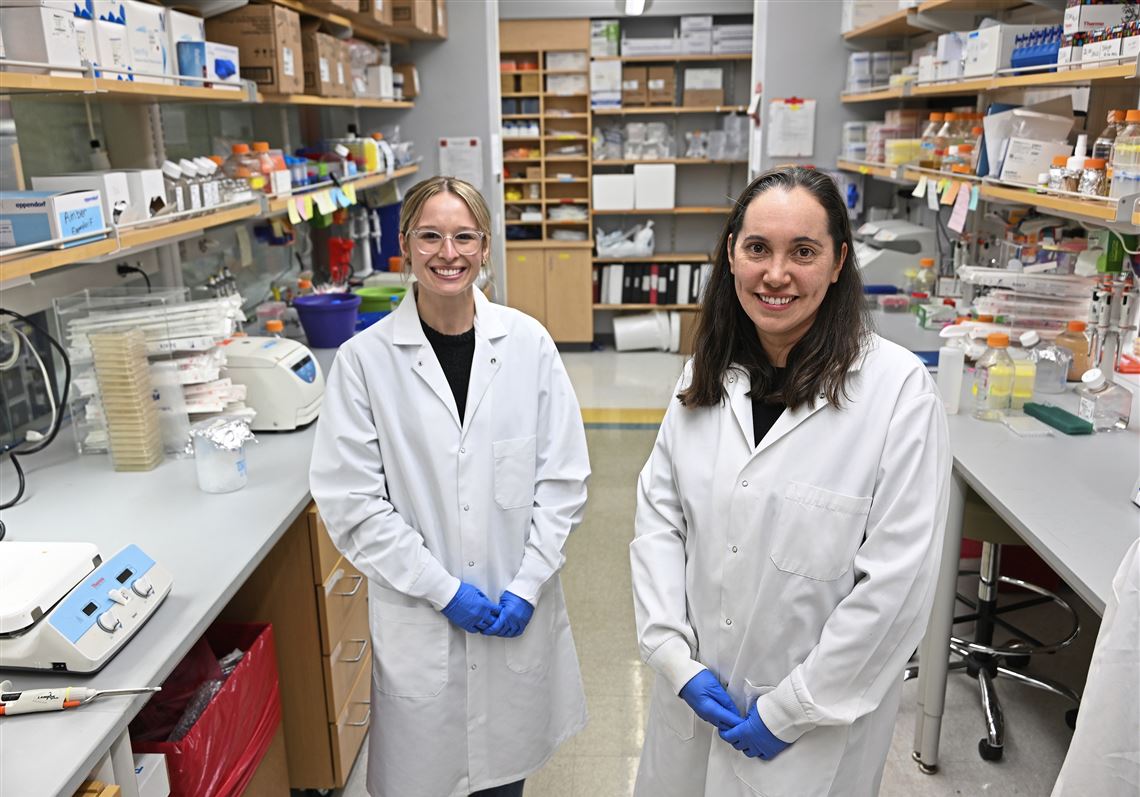Daria Van Tyne didn’t expect to see changes in a population of bacteria taken from a UPMC hospital. Her hunch was wrong, but the results of her recent study point to a potential solution for antibiotic resistance.
Bacteria are ancient creatures that have learned advanced evolutionary behaviors over billions of years. The particular strain Van Tyne was studying, Enterococcus faecium, exists in the guts of humans and many animals and is hard to kill.
“As a researcher, I’m very interested in how the bacteria that make people sick in the hospital are evolving and changing over time,” said Van Tyne, an associate professor of medicine at the University of Pittsburgh School of Medicine’s Division of Infectious Diseases. She’s senior author on a paper, published March 21 in Nature Microbiology, which found three new emergent strains of drug-resistant Enterococcus faecium, some with the capacity to completely wipe out their neighbors.
The researchers hope their findings can be used to develop a potent medicine to treat bacterial resistance, a growing problem in a world teeming with antibiotic prescriptions and imbalanced gut microbiomes.
The World Health Organization has deemed antibiotic resistance a key global threat to public health, directly responsible for 1.27 million deaths in 2019 and associated with 4 million others. More than 39 million people will die from antibiotic resistance by 2050, by one analysis published in Nature, if innovative measures are not taken.
Because of their ubiquity, Enterococci frequently infect patients in hospitals, leading to bloodstream and urinary infections. These infections are typically treated with the antibiotic vancomycin, but strains — called vancomycin-resistant Enterococcus faecium, or VRE — have emerged that are resistant to this treatment.
“I call them the cockroaches of the human microbiome,” Van Tyne joked.
Per the Centers for Disease Control and Prevention, VRE caused an estimated 54,000 infections in hospitalized patients throughout the U.S. in 2017. Ten percent of those infected patients died.
Van Tyne and her lab were able to access the genomes of 710 samples collected between 2017 to 2022 at a nearby UPMC hospital through a large database, called the Enhanced Detection System for Hospital-Associated Transmission (EDS-HAT) whole-genome sequencing surveillance program, which helps hospitals track how bacterial infections spread among patients.
“We simply wanted to know, are there any detectable changes in the bacterial population over this six-year time frame?” she said. “We were surprised, pleasantly surprised, when we did see this very dramatic change in the population of bacteria causing infections in people in the hospital. That first observation kicked it all off.”
Similar to how coronavirus variants evolve and eclipse each other over time, bacterial strains are constantly at war, competing to outlive one another. Over the six-year period, the diversity of the VRE strains bottlenecked from eight to two dominant strains, which showed up in 80% of samples from 2022.
After peering into the genetic codes of those 710 samples, researchers discerned how those two strains gained prominence over the others. They found genes associated with increased ability to replicate and better kill other bacterial cells. They also discovered that all the dominant strains developed a collection of proteins, called a bacteriocin — an antibiotic bacteria make to kill others.
This bacteriocin allowed these strains to have a competitive advantage over the others, catapulting them into dominance.
“The bacteriocin is just like a pin,” Van Tyne said. If other cells are the balloons, it easily pops them, exploding their contents and killing them.
“The new strain with this bacteriocin completely wiped out the old strain in every mouse that we looked at, which was really reflective of what we saw in the hospital,” said Emma Mills, first author on the paper and a Ph.D. candidate at Pitt Medicine’s microbiology and immunology department. “It was very drastic.
“The idea is that if these specific VRE in patients’ GI tract produce this bacteriocin, they’re able to kill their neighbor, eat their food and snatch it up, which makes a really great competitive advantage in the GI tract.”
It’s thought that nearly every bacterial species has the capacity to produce a bacteriocin, but researchers are still working to identify them all. Some bacteriocins occur naturally in dairy and fish products, warding off worse foodborne pathogens.
These natural antibiotics have been studied across the globe for decades for their potential to target antibiotic resistance. One 2015 study found that a bacteriocin inhibited the growth of Listeria, a rare but deadly foodborne pathogen. Bacteriocins also have been shown throughout scientific literature to be nontoxic, compared to pharmaceutical antibiotics with longer side-effect profiles.
In Van Tyne and Mills’ study, they wanted to explore whether these hardy bacteriocin-producing bacteria were unique to UPMC and the 710 sample pool.
Using a global genetic sequencing database of 15,000 VRE samples taken from 2002 to 2022, they found that the dominant strains they identified were persistent in the hospitals of other countries, including Australia and Denmark.
“Surprisingly, this local phenomenon was actually playing out on a global scale,” Van Tyne said.
“We do see such a strong and powerful signal that bacteriocins can truly shape populations of microbes within health care systems,” Mills said. “So we could definitely leverage that as a weapon.”
With modern gene sequencing, discovering potential treatments like bacteriocins is easier than ever. Van Tyne and Mills are continuing their research in this area to see how VRE strains are changing over time.
“The silver lining here is that there are many fewer strains of VRE we now worry about treating,” Van Tyne said. “We can focus our efforts on developing new therapeutic approaches for VRE infections with the small number of strains that are currently circulating.”
First Published: April 13, 2025, 8:00 a.m.
Updated: April 14, 2025, 4:54 p.m.



















